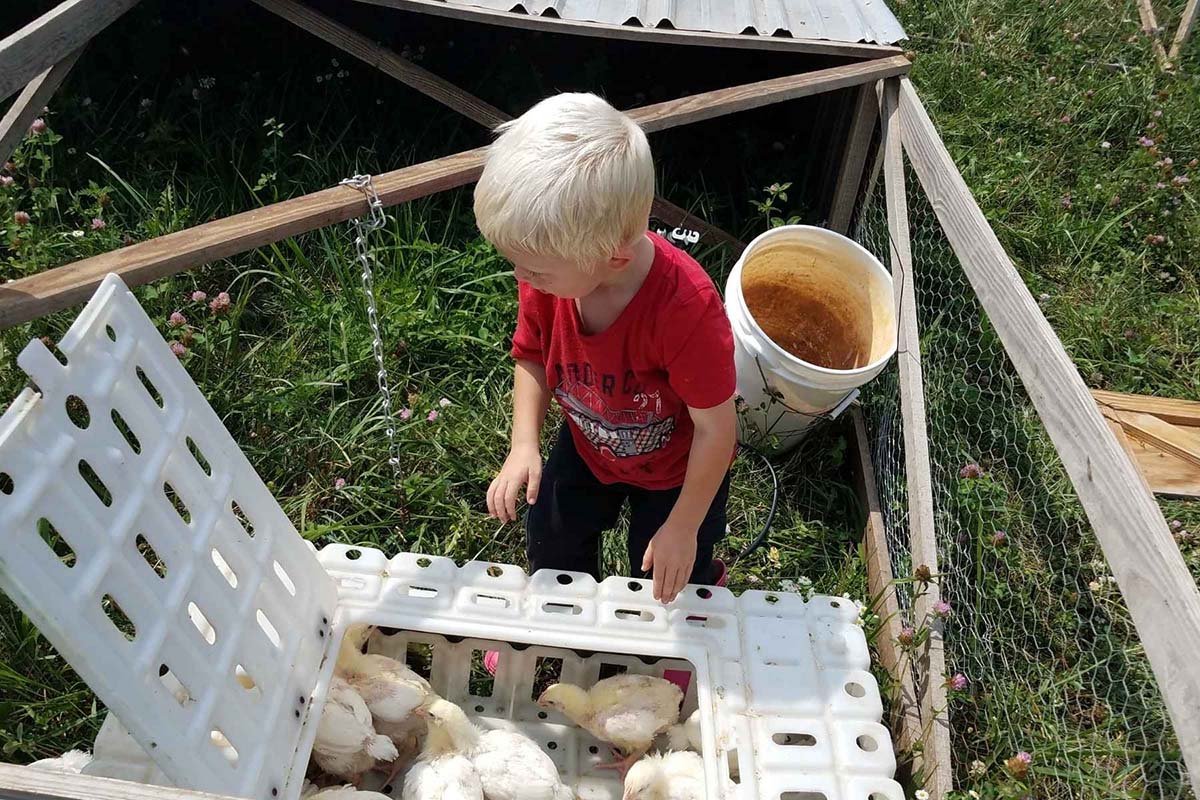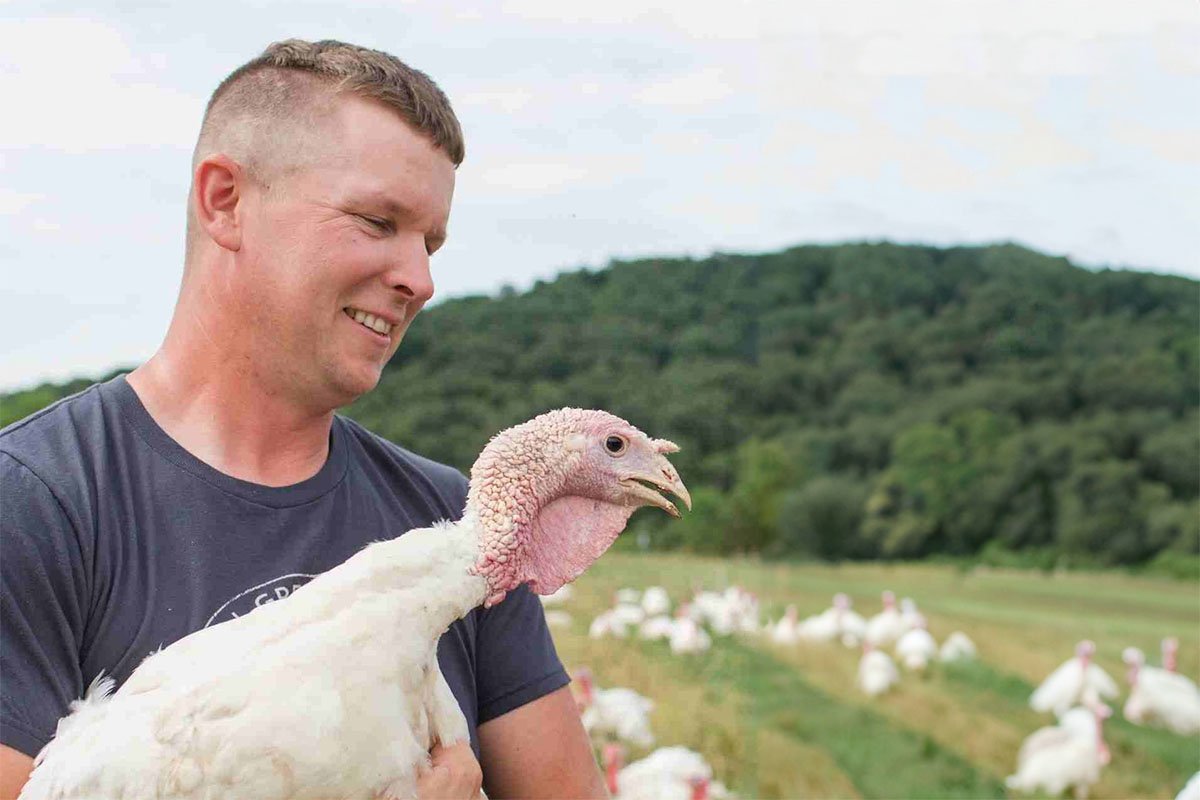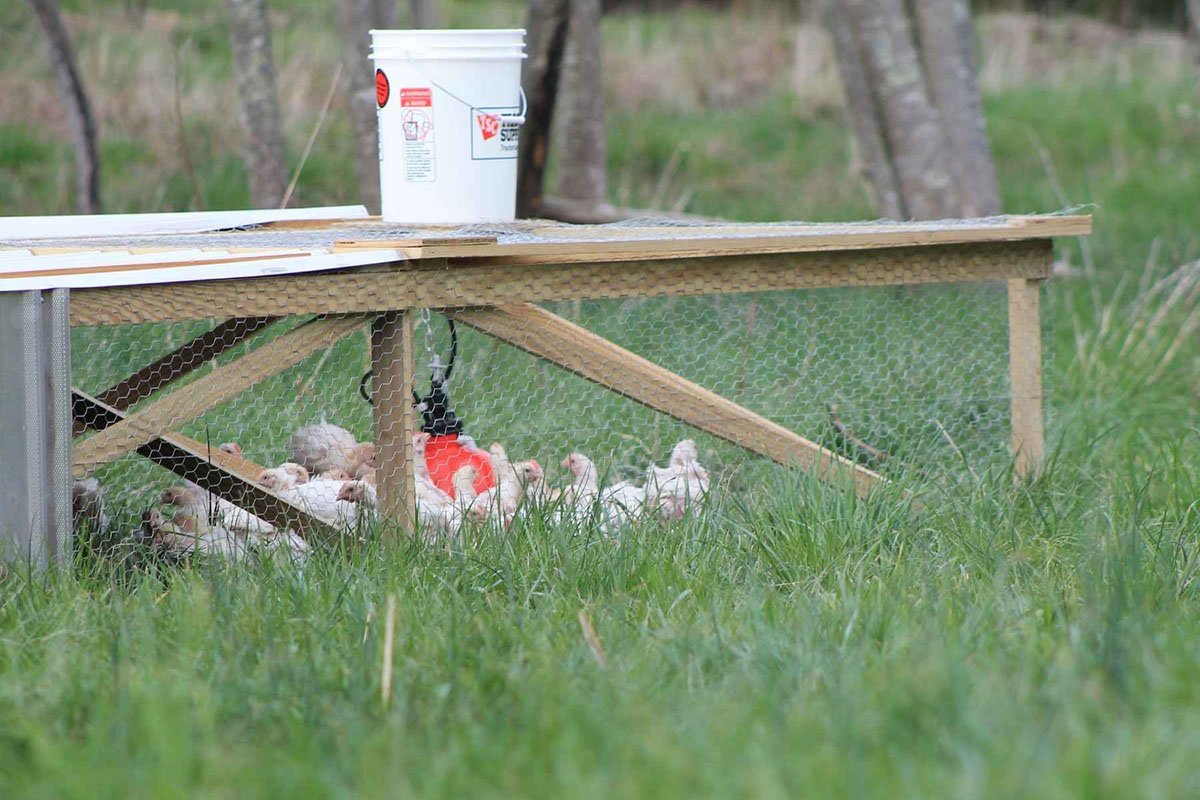Questions to ask when choosing a farm website platform
Abby & Jake from Apple Creek Farm. Abby shares thoughts on Shopify for farm websites at the end of this article.
This Grapevine article was originally published in the November/December 2023 issue of APPPA’s Grit magazine.
*Links marked with an asterisk are referral links. When you click on a referral link and make a purchase, Grapevine receives a small commission at no cost to you.
Whether you’re getting ready to launch your first online store or considering a platform shift for your existing one, it is crucial to think through your needs before you invest precious time and money into a new platform. While there are dozens of platforms available to choose from, we’ll be focusing on just five of the most popular platforms: Shopify*, Square*, GrazeCart, Barn2Door (B2D), and Local Food Marketplace (LFM) — but you can use these questions as a guide to assess any platform.
These five platforms can be broken into two categories: specialized and mainstream. The specialized platforms (GrazeCart, B2D, and LFM) are more expensive, but they are devoted to the specialized needs of food producers and offer niche functionality built right in. The mainstream platforms (Shopify and Square) typically have a lower base price, offer more streamlined shipping and fulfillment processes, and have a wide variety of add-ons available, but may not easily accommodate certain niche functionality that a farm wants or needs.
You don’t have a lot of extra time to spare, so you might be tempted to jump in with a new platform. But investing some time up front to fully explore functionality and book a few demos could save you time down the road and prevent the headache of having to switch platforms later. As you set out on the journey of picking the platform that will best suit your farm, you can start by asking yourself the following questions.
What is your plan for driving sales?
A new e-commerce website isn’t magic in and of itself, so don’t sink your whole budget into your website without a marketing plan. Just building a site that lets you ship orders around the country doesn’t mean you’ll instantly have all those orders (or even be able to instantly saturate your local market) without putting budget and effort into advertising, social media, email/SMS marketing, and other tactics.
How will the platform support marketing?
Don’t get too hung up on which platform says it supports search engine optimization (SEO) or Meta pixels; the difference among platforms there is negligible. Likewise, all five generally support responsive design — the ability of the site to respond and adapt to screen sizes — which is key since over half of online shopping takes place on mobile devices.
Do explore email integrations so you can understand what email/SMS tools work with that website platform, including what automations are available. (Automations work behind the scenes to cultivate new leads and build customer loyalty — these are key to building a strong business.)
You can also consider whether the website and store live together on a single platform and within one domain, i.e. yourfarm.com. Having the website and store under one roof can play a role in SEO, support consistent design and cohesive customer experience, and enable an integration of a product feed in the home page. GrazeCart, Shopify*, and Square* do enable this “one roof” setup. While B2D and LFM don’t allow for this, keep in mind that they get points for niche functionality. And with LFM, you can opt to have a custom subdomain for your store, i.e. store.yourfarm.com, plus you can have a very robust companion website for your store, since you can pick any platform you want for that.
Do you plan to sell meat by the pound or by the package?
All platforms can accommodate sales by the package, but only the specialized platforms (GrazeCart, B2D, and LFM) allow you to sell online by the pound. If you’re set in your pricing model and are unwilling to budge, this question will be a big determining factor in which platform you choose. We urge you, however, to have an open mind.
Check out our post on this topic: Should you sell meat by the pound or by the package?
Do you need a POS for in-person sales?
To avoid having to manually reconcile inventory between your in-person and online sales, it’s best to use a POS that fully integrates with your online sales platform. Shopify*, Square*, GrazeCart, and B2D each have their own POS, and LFM integrates with Square POS. Shopify POS is the only POS in that group that does not innately accommodate selling by the pound, so if you’re leaning towards Shopify as a platform you need to be willing to sell by the package both online and in person, or else use a separate POS and deal with reconciling two sets of inventory.
What fulfillment methods do you offer?
If shipping is an important part of your sales model (or you want it to be someday), make sure the platform you choose can support your shipping needs and goals. Does the platform have helpful tools built in (like generating and printing labels), or will you need to pay for an app/add-on to streamline your shipping process? LFM does not accommodate shipping; GrazeCart and B2D do; and Shopify* and Square* excel at shipping, but don’t provide useful picklists without an app.
If local deliveries or drop points are an important part of your sales model, consider what integrations are available for routing software to streamline your delivery process.
If your farm is just starting out with shipping/delivery, don’t forget to consider the other costs of shipping or delivering your products — do you need to be able to factor in the cost and weight of coolant, special box liners, or other things for shipping perishables? Do you use coolers or refrigerated bags at drop off? Does your state have special taxes for food deliveries? You’ll want to know if your chosen platform can handle any additional costs.
Do you offer a CSA program or recurring subscriptions?
If your farm has a CSA, what type is it and how important is your model to you? Are you willing to adjust your model to fit into an existing system that you can plug into, rather than trying to reinvent the wheel? You can easily offer a buy-down CSA on just about any platform. LFM is the only one of the five that has the built-in traditional CSA functionality, although all five now offer some type of recurring subscription option with varying costs and levels of customization. Recurring subscriptions can be branded as a CSA or simply as a Subscribe and Save option. Before choosing a website platform, be sure to explore the backend and understand how ongoing management will work for both you and the customer.
Do you sell any pre-order/deposit products (like bulk beef, Thanksgiving turkeys, etc.)?
This is a good time to stop and reassess the details of your model for holiday or bulk orders. How much time and headache does it take to manage these orders now? How will it change on your new platform, if at all? Whether or not you decide to change your model, you’ll want to understand exactly how the platform will support these sales, including your ability to take advance deposits and looking at how the backend and customer communications will work.
Do you sell wholesale?
GrazeCart and LFM have the functionality built in to make this a simple and streamlined process, so if you have high volume wholesale orders, consider those platforms. Shopify* can also handle wholesale with an app for an additional fee.
Are you aggregating food from other producers?
All five platforms enable you to label items as coming from different producers, but LFM is the only one of the five that has robust built-in management for food hubs.
Does your farm have any extra offerings?
You’ll find varying support among the platforms for offering event tickets, farm stays, summer camps, digital products, etc. In some cases, using an app or a third-party system outside of your chosen platform can solve specialized needs. Note that some platforms and credit card processors also block sales of live animals and cannabis products (including CBD).
Pricing
Look beyond the base fee and consider the price of the platform + any add-ons you need + POS. Factor in the cost of a companion website for your store, if you’re choosing a platform like LFM or B2D that is store-only. Consider the cost of any third-party systems needed to fill in any gaps of your chosen platform.
Available apps/add-ons
The mainstream platforms (specifically Shopify*) beat the specialized platforms in this arena, hands down. That said, you don’t want to stack too many apps on top of one another because the cost can increase quickly, plus apps don’t always play well together. Once you decide on the features you need, you can start to weigh which platforms have your key needs covered inherently, and which will require extra work or apps.
Additional considerations
A few more items to consider:
Design capabilities/visual customization — and how much can you do on your own, vs. with a pro?
How much of the store setup will the platform handle turnkey for you? If you’re meant to do it on your own, is there a community of specialized consultants available to help?
Will it handle the payment methods you envision? For instance, Square* does not do COD, and only LFM can take SNAP/EBT for online orders.
How user friendly will it be for your customers?
What is the reputation and reliability of the platform? What about their customer service?
What do pick lists & backend reporting look like?
Integration with your accounting software — is it automatic, is there a fee, is it a manual export/import?
Will it grow with you as your sales grow? What about if you add new sales channels or offerings?
How easy will it be to change later? Will you be able to export your customer list and products?
Some thoughts from your fellow farmers
Micha from Bright Ide Acres
Micha Ide of Bright Ide Acres has been using Square* since 2020 because the web platform they were using at the time (Weebly) was acquired by Square. She says:
“We are moderately happy with Square as a web platform. Being on the platform since they started rolling it out means we've been through some pretty big disruptions and ups and downs as they fine tuned their technology. There are some really nice features, like the full integration with their POS systems. The web design options are expanding, and overall the appearance of our website is nice. Customers seem to like the look and functionality of our website (of course we have Grapevine to thank for much of that!). Some of the most frustrating things are poor options for exporting orders, no way to batch edit orders (i.e. I have to open each order individually to mark it as complete, rather than just check off a bunch at once). But for the cost and the overall functionality, I do think Square is a decent option especially now that I've learned how to manage its quirks.”
Abby & Jake from Apple Creek Farm
Abby Sadauckas of Apple Creek Farm switched to Shopify* earlier this year.
“Our website is sooooo much better than our combo of Local Line and Wordpress, but there are features of Local Line that are built for farmers and also work for the online shopper. I think that Shopify is still making things easy for the shopper at the expense of the sanity of the farmer or retailer. While Shopify may rule in terms of ease of fulfilling online orders (billing, taxes, fulfillment are all awesome), I have found it super cumbersome and limited as a POS option [since it does not innately support selling by the pound]. We've decided for the short term (until the end of 2023 at least) to remain with Square as our POS.”
Photos from J & L Green Farm
Laura Green of J & L Green Farm has been using GrazeCart for a couple of years and says she wishes she had done it earlier. She interviewed a handful of other e-commerce platforms before settling on GrazeCart and shared the must-have features she was looking for if she was going to spend the time and money to learn a whole new platform.
“I was interested in finding a platform that could offer different pricing for different states and different zip codes. It [also] absolutely had to be able to sell by the pound [online], and be able to feed into Quickbooks. [Ultimately], the number one thing that sold me on GrazeCart was customer service.” Her perspective on the higher monthly cost associated with specialty platforms like GrazeCart? “If this platform is going to cost me $100 more than [another platform], that would look like, ‘Can I go sell 10 extra turkeys this month?’, or ‘Can I go sell 10 lbs of sausage this month?’, whatever it is to make up that difference in the cost. And nothing puts a fire under our butt more than going, ‘I’m all in and we’re going to make this happen no matter what because I have to.’”
No farm website platform is perfect
At the end of the day, it’s important to remember that no website platform will ever cover all of your needs and wants perfectly, so being flexible is key. Make a list of everything you imagine your website will have, break that list down into needs (anything that is non-negotiable) and wants (the things you’re flexible on), and finally order your wants by level of importance. Be detailed and don’t leave room for assumptions.
Next, take some time to really focus on how those needs and wants translate into functionality. It can be great to brainstorm and imagine how you want everything to work, but also take the time to dig into what is already possible! There are some great systems that have been created and are ready for your farm to plug into, so consider the areas where doing that is the best option. It can feel exciting to invent very specific custom functionality, but is that truly the best thing for your farm and your budget? Consider the implications of creating complex systems from scratch: How clunky will it be? How long will it take to work out the kinks? Will it lessen or increase your workload? Will it translate to an understandable customer experience? Would your time be better spent fostering relationships and trust with your customers?
If you’re a beginning farm, talk to established farms before setting your sales and fulfillment models in stone. If you’re a seasoned farm, be honest with yourself about what is and isn’t working, and be open to change. Just because you’ve always done something one way, doesn’t mean it’s the only way. Talk to other farms about their experiences!
Want to explore farm website platforms further? Check out our detailed side-by-side comparison of a handful of platforms, including full cost breakdowns.















